When you think of the Camino de Santiago, paperwork is generally not the first thing that comes to mind. Yet it is precisely documents like the Credencial, or pilgrim’s pass, and the Compostela that are an essential part of this pilgrimage. As you prepare for your Camino to Santiago de Compostela, it is therefore important that you have a good idea of what paperwork to expect along the way. And of course how your documents work. In this blog we will tell you more about the 4 important symbols and and documents.
What Is the Pilgrim Pass and Why It Matters
As you prepare to embark on the Camino de Santiago, understanding the significance and requirements of the essential documents is crucial. These documents not only guide your journey but also enrich your experience, connecting you deeply to the historical and spiritual essence of the pilgrimage. Let’s begin by exploring the most iconic symbol of the Camino, the scallop shell, which has guided countless pilgrims to Santiago de Compostela through the ages, marking the way with its distinct shape and historical lore.
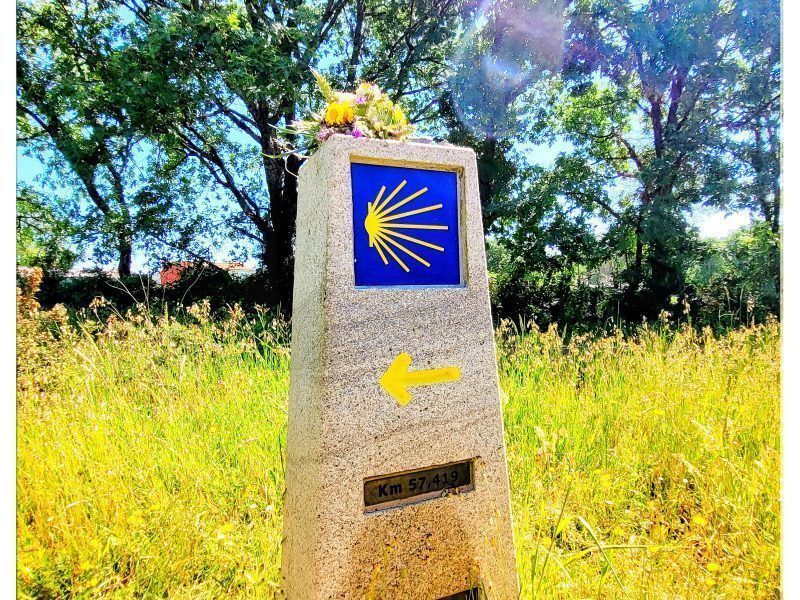
1. The Scallop Shell: The Camino’s Guiding Symbol
Before starting, let’s first start with another, very important subject: the shell. The scallop shell is the symbol of the Camino to Santiago. Images of it can be found on all the Camino and in all kinds of forms. Whether painted on rocks, placed on the pavement or made of real shells, they lead you to Santiago de Compostela.
Legend has it that after his execution in Jerusalem, the body of St James (Santiago in Spanish) was transported to Spain in a ship guided by an angel. On arrival at the Spanish coast, a rider and his horse entered the water. The power of Saint James miraculously lifted horse and rider, covered in scallops, out of the water and put them safely on shore. Thus, this shell became the official symbol of Camino de Santiago.
Before the Compostela existed as a document, pilgrims who reached all the way to Santiago de Compostela received a badge in the form of the scallop shell. This was proof of completing the route to Santiago de Compostela. But it was also very easy to fake. This is why officials in Santiago de Compostela and the pope devised the cartas probatoria, or ‘proof letters’, as early as the Middle Ages. The precursor of today’s Compostela.
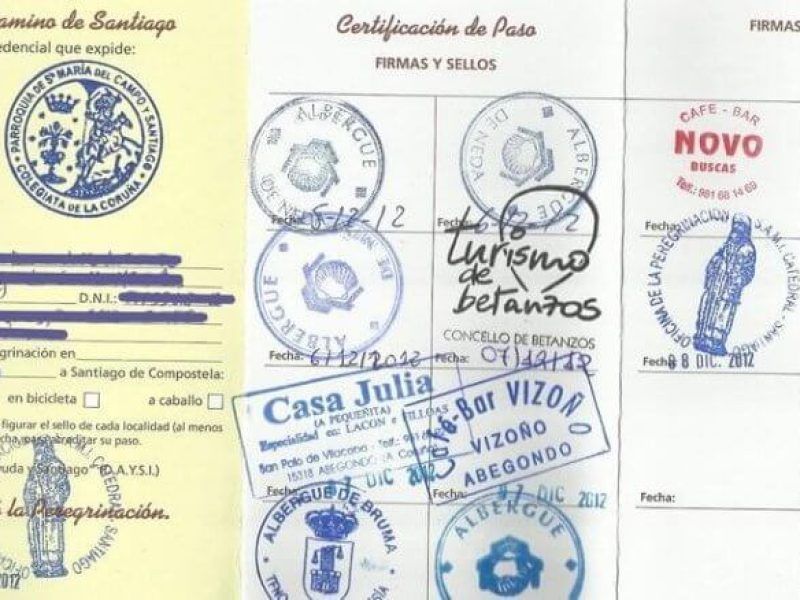
2. What Is the Pilgrim Pass (Credencial)?
Even today, and perhaps more than ever, getting to the Compostela is a strictly controlled process, and the most important part of that process is the pilgrim’s pass. This is also called: the Credencial.
The pilgrim pass (or pilgrim’s passport) is the successor to the letters of safe passage issued to pilgrims in the Middle Ages. These letters were a kind of proof of identity for pilgrims, which they could show when they crossed borders or wanted to enter a city, among other things.
The pilgrim pass is taken very seriously. Without it, pilgrims en route cannot enter some albergues or pilgrim hostels and cannot receive the Compostela.
If you book a Camino with WAW.travel, you will always receive a pilgrim’s pass at home, or we will make sure it is ready for you at the first accommodation. Do you set off on your own? You can buy the pilgrim’s pass in most ‘major’ towns on the pilgrim’s route and also along the way.
From 2021, pilgrims can obtain stamps using a QR code along the various pilgrim routes. All this will be recorded in a digital pilgrim passport. Santiago Cathedral and the Xunta de Galicia recently presented the digital document. It is a new functionality appropriate to these times. The digital pilgrim passport, to be managed via a mobile application, aims to provide greater convenience for pilgrims. In addition, a digital pilgrim passport contributes to a more secure Camino de Santiago by limiting physical contact between hospitaleros and pilgrims. You can read more about it here.
Today’s pilgrim pass is issued by the Office of Pilgrimages of the Diocese of Santiago and unfortunately does not guarantee safe passage, but pilgrims generally no longer have to worry about roving bandit thieves. However, the Pilgrims’ Office in Santiago de Compostela still worries about forgery. And that is why the stamps in your passport are so important.
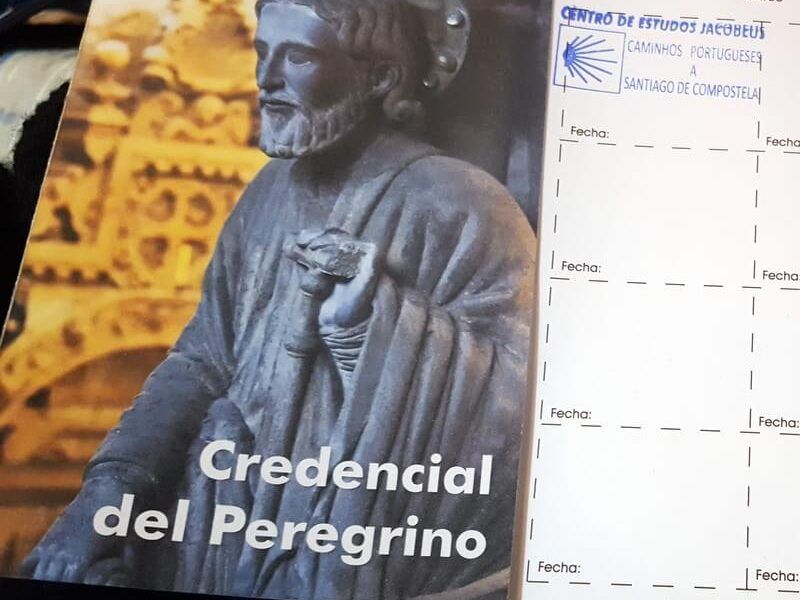
3. Getting Stamps on Your Pilgrim Pass
Sello is the Spanish word for ‘seal’ or ‘stamp’ and these precious seals go hand in hand with your pilgrim’s pass. There are two very important aspects to using your pilgrim pass and receiving a certificate:
- Pilgrims must cover a minimum of 100 km on foot to Santiago de Compostela
- In these 100 km, pilgrims must stamp their pilgrim’s pass at least twice a day (even if you walk more than 100 km)
Different rules apply to cycling pilgrims:
- Pilgrims must cycle a minimum of 200 km to Santiago de Compostela
- In these 200 km, pilgrims must stamp their pilgrim’s pass at least twice a day (or once a day if you cycle longer than 200 km).
Where to find these stamps? Fortunately, stamps are provided along the way by almost institutions, including hotels, albergues, churches, town halls, post offices and even bars and restaurants. These stamps in your pilgrim pass are a badge of honour for some pilgrims, who try to get as many as possible. Los Sellos del Camino is a website dedicated to collecting them. Especially for those curious about the availability of stamps.
4. The Compostela and Distance Certificate
The Compostela is proof that you have completed the Camino. Strictly speaking, the Compostela is a religious document. The pilgrims’ office at Santiago Cathedral explicitly says it will only be issued to those making the journey with “religious or spiritual reasons, or at least an inquisitive attitude”.
This becomes even clearer when reading the prayer on Compostela (translation taken from the Pilgrims’ Office website):
The Chapter of this Holy Apostolic and Metropolitan Cathedral of Compostela, custodian of the seal of the altar of St James to all the faithful and pilgrims who arrive from anywhere on the globe of the earth with an attitude of devotion or because of a vow or promise to make a pilgrimage to the Tomb of the Apostle, Our Patron Saint and Protector of Spain, acknowledges before all who observe this document that: …………… devotedly visited this holiest temple with Christian feeling (pietatis causa).
Because of its historical and spiritual significance, the Compostela is a prized document for many pilgrims. Nowadays, you don’t have to be particularly spiritual or religious to walk the Camino, nor to obtain the Compostela. You can still indicate that you are religious as an addition, when you arrive in the pilgrim city. However, this is mainly for the statistics of the Pilgrims’ Office.
Besides Compostela, the Pilgrims’ Office offers pilgrims the distance certificate. A document issued by the Chapter of Santiago Cathedral that confirms the number of kilometres they have covered, regardless of the starting point of your pilgrimage. This document fulfils the desire that many pilgrims have expressed for years to have an official record of more details of their pilgrimage. It indicates the day and starting point of the pilgrimage, the kilometres travelled, as well as the day of arrival and the route of the pilgrimage.
This distance ticket costs €3.00, it is slightly larger than the Compostela and is printed on parchment paper. It is decorated with a sentence in Latin and a miniature, both from the Codex Calixtinus.
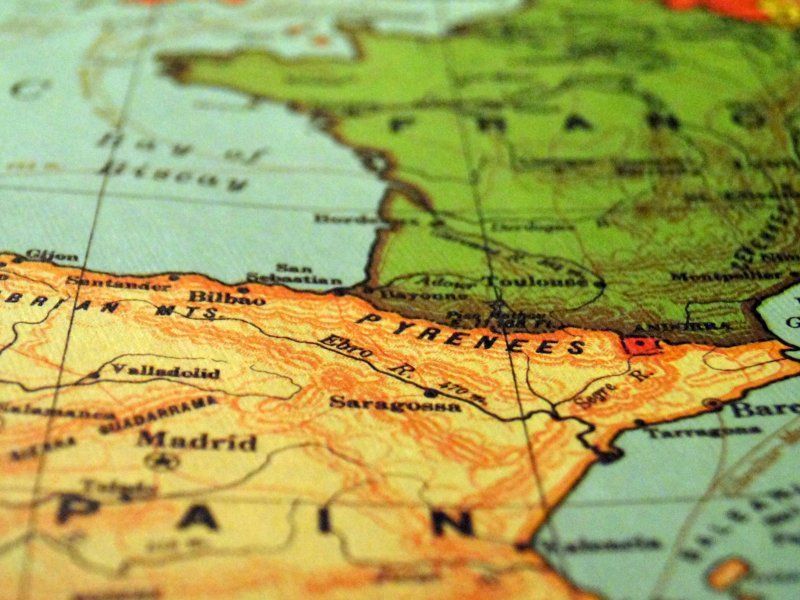
Completing Your Pilgrimage with Essential Knowledge
As we conclude our exploration of the key symbols and documents of the Camino de Santiago, it’s clear that these elements are much more than mere formalities. They are deeply embedded in the tradition and spirituality of the pilgrimage, offering both a practical and symbolic guide to your journey. Understanding and respecting these traditions can significantly enhance your experience, providing not just a path, but also a story to accompany every step towards Santiago de Compostela.
Embark on Your Journey with Confidence
With a clear understanding of the pilgrim pass and symbols of the Camino, you are now ready to embark on your pilgrimage with confidence. Whether you’re walking for spiritual reasons, personal reflection, or simply to experience the rich culture and history of this ancient route, each document and symbol you encounter will add depth and meaning to your journey. Carry this knowledge forward as you step onto the path that millions have walked before you, and let it enrich every moment of your pilgrimage to Santiago de Compostela.
Do stamps from bars or private businesses count?
Yes — stamps from bars, cafés, hostels, local shops and other businesses along the route are valid, as long as they clearly include the name and location of the place. The goal is to prove that you have walked the stages, not necessarily to collect stamps only from official institutions. Churches, tourist offices and albergues also provide stamps, but a mix of both official and private ones is completely acceptable for obtaining the Compostela.
What happens if I lose my pilgrim passport during the Camino?
If you lose your pilgrim passport, you can get a new one at many points along the Camino, such as pilgrim offices, churches, albergues or tourist information centers. However, you’ll need to start collecting stamps again from the moment you receive the replacement. The lost stamps cannot be recovered, so it’s best to keep the new credential safe and ensure you get the required number of stamps per day for the final stages into Santiago.
Can a damaged or wet credential still be accepted?
In most cases, yes. A credential that has become wet, wrinkled or slightly torn is still valid as long as the stamps remain readable. The Pilgrim Office mainly checks that dates, locations and stamps are clear enough to verify your route. If any sections are completely unreadable, you may be asked for additional proof or explanations, but minor damage is usually not a problem. Keeping the passport in a waterproof pouch helps prevent issues during rainy stages.


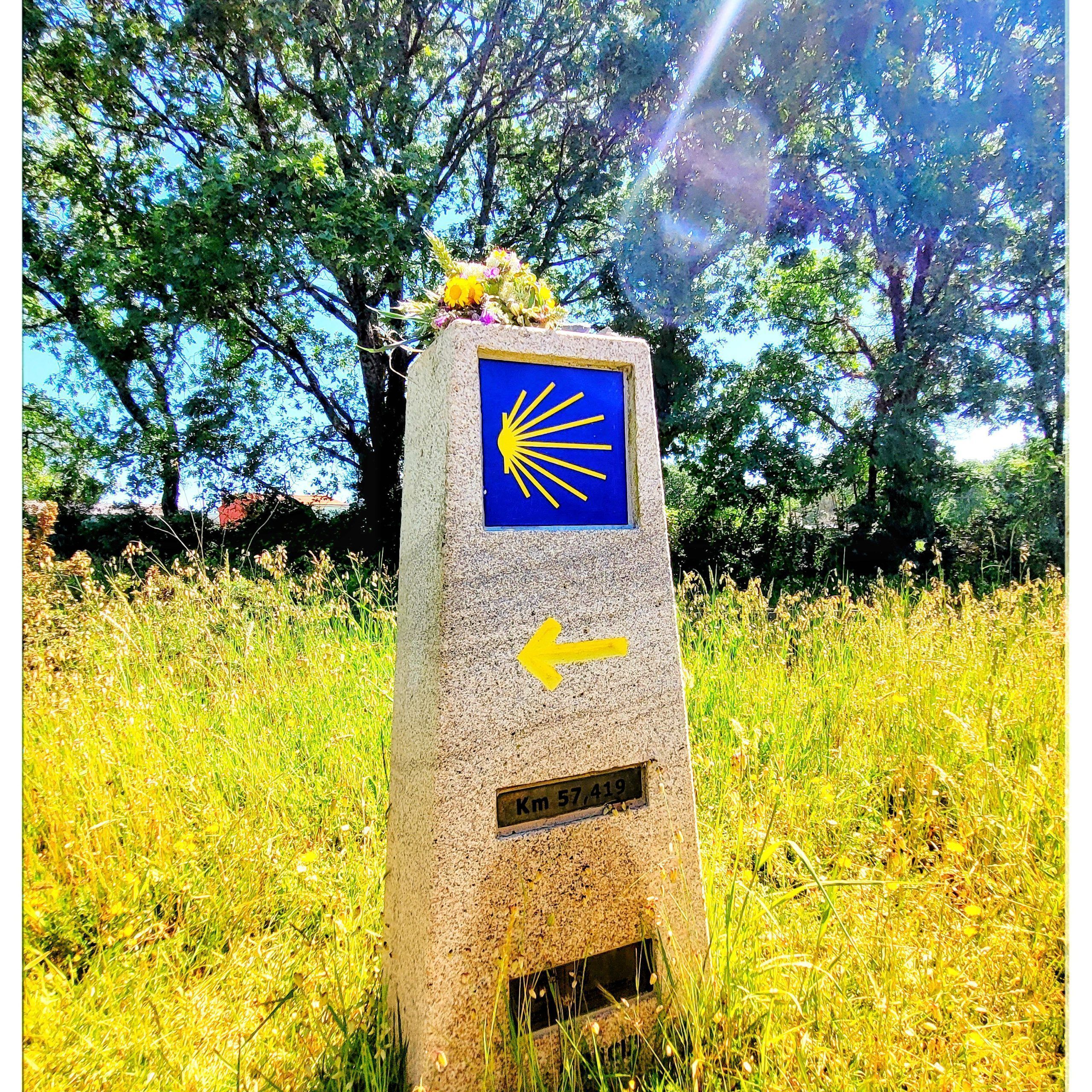
Comment (0)